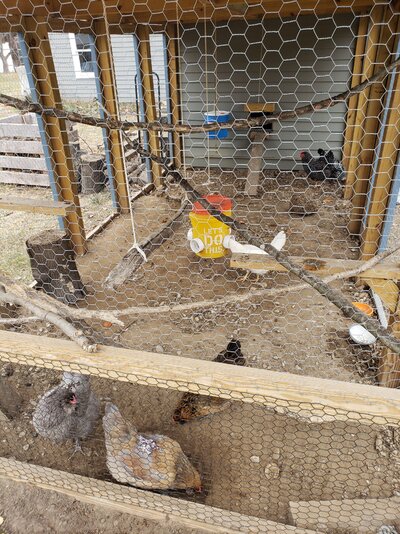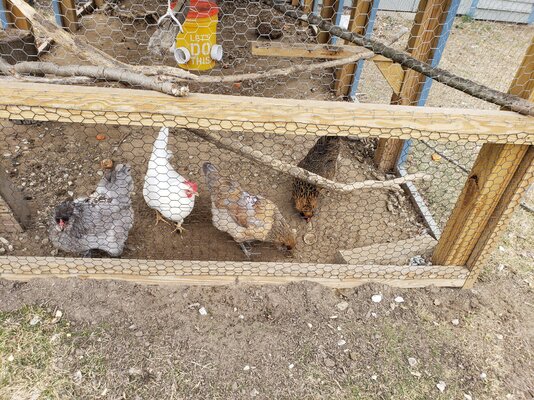AeroChickens
In the Brooder
- Apr 27, 2020
- 14
- 14
- 31
We got 5 baby chicks early April, one turned out to be a rooster. This last February, the rooster started being aggressive with a hen, so we put him in jail and adapted 5 more hens from a neighbor who was moving. After a few days of letting the hens get to know each other, we let them meet.
The 5 new hens are all above the 4 original hens in the pecking order. We tried to let the rooster out after a while, but he attacked and made one of the new hens bleed, so we traded the roo for a jar of pickles.
We adopted the new hens back on Feb 20th, but our hens are still having a hard time - in the morning, they get attacked if they get off the perch to try to eat after the new hens. When we open the door to the run, the original hens aren't allowed out for a bit, and when they eventually go out, they just roost in a corner. There is another food and waterer outside, but they also have trouble using that one.
On cold windy days the original hens just sit outside on that perch, when they would have been inside before we got the new hens.
Is it normal for it to take so long for them to integrate?
When they are all free ranging, they often mingle with each other a little bit, but even then the new hens feel the need to randomly peck our original hens.
How much longer until they all get along?
The 5 new hens are all above the 4 original hens in the pecking order. We tried to let the rooster out after a while, but he attacked and made one of the new hens bleed, so we traded the roo for a jar of pickles.
We adopted the new hens back on Feb 20th, but our hens are still having a hard time - in the morning, they get attacked if they get off the perch to try to eat after the new hens. When we open the door to the run, the original hens aren't allowed out for a bit, and when they eventually go out, they just roost in a corner. There is another food and waterer outside, but they also have trouble using that one.
On cold windy days the original hens just sit outside on that perch, when they would have been inside before we got the new hens.
Is it normal for it to take so long for them to integrate?
When they are all free ranging, they often mingle with each other a little bit, but even then the new hens feel the need to randomly peck our original hens.
How much longer until they all get along?





